SWEDEN
Economy

Economy

Cities in SWEDEN
| Stockholm |
Economy
General
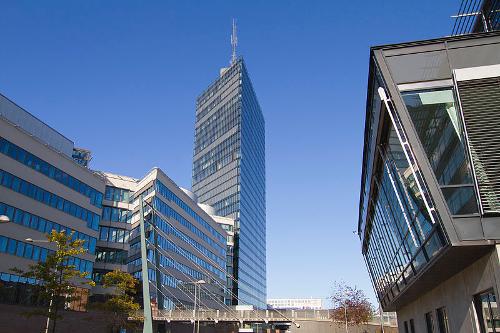 Stockholm business center of SwedenPhoto: Brorsson CC 3.0 Unported no changes made
Stockholm business center of SwedenPhoto: Brorsson CC 3.0 Unported no changes made
Sweden has developed over the last hundred years from a relatively poor agricultural country to a modern industrialized society. Sweden is now one of the wealthiest countries in the world, with high incomes and good social security.
Sweden has a free market economy in which private business plays the largest role. Almost 90% of the companies are privately owned. The state participates in economic life through a number of state-owned enterprises and participation in the capital of a number of private enterprises. Especially after the Second World War, from which Sweden emerged through its neutrality with an intact production apparatus, the economy experienced rapid growth. At the same time, this meant a radical change in the social structure. For example, to meet the high demand for labor, foreigners had to be recruited on a large scale.
The economic crisis also hit Sweden in the 1980s. This led to rising inflation, a growing budget deficit, devaluations of the Crown and growing labor unrest despite a low unemployment rate (on average between 1 and 3%). Another problem has been the continued growth in government spending, especially on social services. The government proposed a hefty austerity policy of tax cuts and government spending cuts to get out of trouble.
In the 21st century, Sweden is still a very prosperous country. In September 2003, Swedish voters rejected entry to the Euro over fear of losing the policy's sovereignty. The economy is increasingly focused on foreign trade. Private companies provide the vast majority of industrial production, with the engineering sector accounting for about 50% of production and exports. Despite strong finances and the underlying good structure, the Swedish economy slid into recession in the third quarter of 2008 and continued to contract in 2009 due to worsening world conditions and reduced demand and exports. Increased commodity exports and a recovery in the profitability of the banking sector brought the economy up in 2010, but growth slowed in 2013 (0.9%), reflecting the continued economic weakness in the EU, the Sweden's largest export market. In 2017, growth was 2.1% and GDP per capita was $ 51,200.
Agriculture, livestock, forestry and fishing
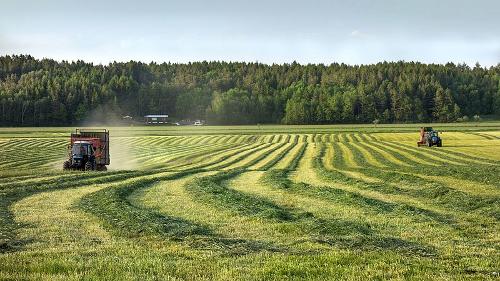 Agriculture SwedenPhoto: W carter in the public domain
Agriculture SwedenPhoto: W carter in the public domain
Agriculture is highly influenced by natural factors. The northern location affects the length of the growing season, and soil and relief affect the surface that can be used for agriculture. In the 19th century, three quarters of the working population was still employed in agriculture; less than 2% in 2017 (including fisheries and forestry). The number of agricultural businesses has also fallen. The remaining companies have generally become much larger. Swedish farms are mainly family-owned and the land belongs to those who work it. The cooperative system, for sales, purchasing and credit provision, is strongly developed. Three quarters of agricultural production is further processed or sold through cooperative organizations. About 7.5% of the land can be used economically. However, they succeed in meeting 80% of the domestic demand. Many crops are grown in the south, such as all kinds of grains, sugar beets and beans. In central Sweden, grain is mainly grown and fodder crops are grown further north.
Cattle breeding takes place in the south, the narrow coastal plain along the Gulf of Bothnia and along the river valleys. Livestock farming mainly focuses on keeping cattle for slaughter and dairy production; in addition, pigs, poultry and sheep are kept.
About 62% of the surface is covered with forest; the wood forms the basis for the important wood, pulp and paper industries. Almost half of the stock suitable for exploitation consists of spruce. Especially in the north it is the only economic activity. Sweden is the largest wood producer in Western Europe. A few large companies together own about half of the forest area.
The importance of fishing to the economy has steadily declined since the 1960s. There are still about 3000 professional fishermen. Half of the fish catch consists of cod and herring. Most fishing companies are small and focus on inshore fishing. Major fisheries in the Atlantic Ocean are also carried out from the west coast. Leisure fishing is important on inland waters.
Industry
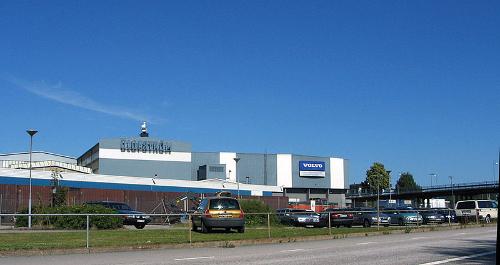 Volvo factory in Olofström, SwedenPhoto: Bulver in the public domain
Volvo factory in Olofström, SwedenPhoto: Bulver in the public domain
Since the beginning of the 20th century, industry has become increasingly important as an economic sector. It employs 12% of the working population and contributes 33% to the Gross National Product (2017). The metalworking and electrical engineering industry is the most important sector, including the automotive and shipbuilding industry and the manufacture of household appliances. The second major industrial sector is the wood processing and paper industries (20% of the industrial contribution to GDP), followed by the steel and iron industries. The petrochemical industry is of increasing importance. The main industrial centers are located in central Sweden and on the south coast.
Mining and Power Supply
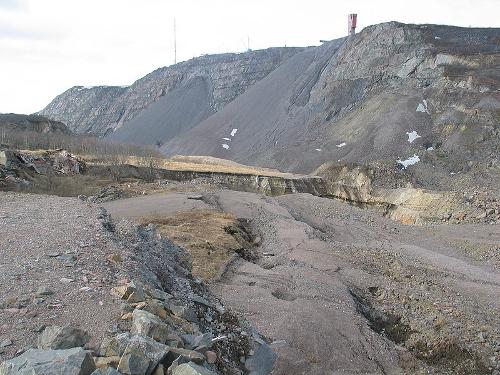 Iron mine Kiirunavaara, SwedenPhoto: Public domain
Iron mine Kiirunavaara, SwedenPhoto: Public domain
Sweden is rich in mineral resources. The main mining product is iron ore, which is mined in the north in Lapland. The Kiruna mine is the most important, mainly because of the high iron content in the ore. Sweden has about 1% of the world's iron ore stock.
Copper, lead, zinc and small amounts of gold and silver are also mined. Arsenic is also found in large quantities and the largest reserves of lead are in Sweden. There are important uranium deposits in Västergötland (southern Sweden), where about 80% of total European supplies are located. There is a small stock of coal that is exploited on a small scale.
The energy consumption in Sweden is very high due to the climate, the high standard of living, the great distances and the relatively low energy prices.
The main domestic source of energy supply is hydropower, which covers 44% of the energy requirement. In addition, nuclear energy is an important energy source (30%). The remainder (26%) of the energy is supplied by oil and coal-fired power stations. There has been an extensive discussion in the second half of the 1970s and after the Chernobyl nuclear disaster in 1986 regarding the expansion of the number of nuclear power plants. This has led to a decision from the beginning of the 21st century to reduce the share of nuclear energy and eventually to phase it out in Sweden.
Trade
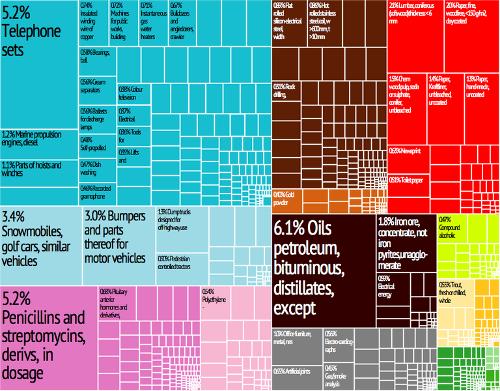 Export SwedenPhoto: R. Haussmann, Cesar Hidalgo, et.al. CC 3.0 no changes made
Export SwedenPhoto: R. Haussmann, Cesar Hidalgo, et.al. CC 3.0 no changes made
The Swedish economy is largely dependent on foreign trade, both for imports and exports. The trade balance has been positive since 1983. After the Second World War, there was a significant shift from exports of raw materials to those of high-tech products. The main export products are: electrical equipment, transport equipment, telecommunication equipment, paper pulp, wood, paper, textiles, pottery and furniture. The main customers are: Germany, England, the United States, Denmark, Finland, the Netherlands and Norway. The total value of exports was $ 165.5 billion in 2017.
Imports are: foodstuffs, petroleum, iron and steel. The main suppliers are: Germany, the Netherlands, the United States, Great Britain, Finland, Denmark, Russia and Norway. The total value of the imports was $ 153.2 billion in 2017.
Membership of the EC and the agreement between the European Free Trade Association (EFTA) were important for the Swedish economy.
Traffic
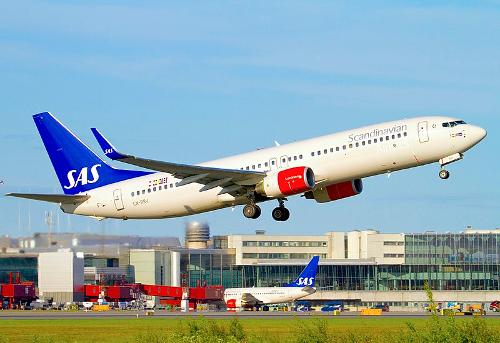 SAS plane takes off from Stockholm Airport, SwedenPhoto: Brorsson CC 3.0 Unported no changes made
SAS plane takes off from Stockholm Airport, SwedenPhoto: Brorsson CC 3.0 Unported no changes made
Sweden has a well-maintained and extensive road network, especially in the south and center. The main connections to the sparsely populated north are formed by two railway lines and a motorway. Car transport is the most important means of passenger and goods transport. Despite the closure of unprofitable lines, Sweden still has one of the largest rail networks in Europe (total length 9930 km). The railway lines are especially important for freight transport.
The electrification of the network will continue, especially to connect to the European rail network. Flash trains running inland. An extensive network of canals has been constructed for inland navigation, important for the transport of ores, oil and coal. Sweden is an important country in ocean shipping. Gothenburg, Hälsingborg, Malmö and Stockholm are the main seaports.
Sweden participates with Norway and Denmark in the Scandinavian Airlines System (SAS), which also handles domestic air traffic in Sweden. International airports are located at Stockholm, Gothenburg and Malmö.
Sources
Best, J. / Zweden
Gottmer
Carlsson, B. / Zweden
Corona
Danse, W. / Zweden
ANWB
Europese Unie
Europees Platform voor het Nederlandse Onderwijs
Meesters, G. / Zweden
ANWB
CIA - World Factbook
BBC - Country Profiles
Copyright: Team The World of Info